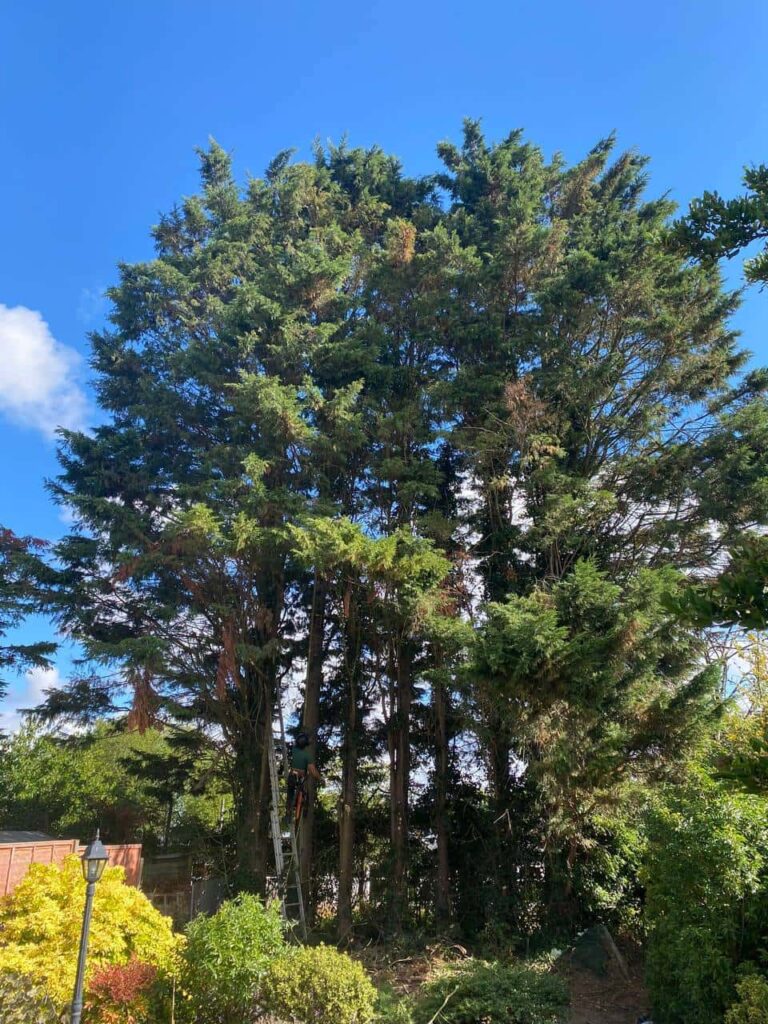Introduction: Environmental conservation is a pressing concern today as we grapple with climate change, habitat loss, and biodiversity decline. While many efforts focus on large-scale initiatives, the role of tree reshaping in environmental conservation often goes unnoticed. In this blog post, Stowmarket Tree Surgeons explores how tree reshaping plays a crucial role in environmental conservation and promotes the well-being of our planet.
The Significance of Trees in Conservation
Trees are often called the “lungs of the Earth” for their remarkable ability to absorb carbon dioxide and release oxygen through photosynthesis. Beyond this vital role, trees offer numerous benefits for environmental conservation:
- Biodiversity Support: Trees provide habitats for countless species of birds, insects, and other wildlife, contributing to biodiversity preservation.
- Soil Health: Tree roots help stabilise soil, reduce erosion, and improve soil fertility, promoting healthy ecosystems.
- Carbon Sequestration: Mature trees store large amounts of carbon, helping mitigate the effects of climate change by reducing atmospheric CO2 levels.
- Air and Water Quality: Trees filter pollutants from the air and water, enhancing the overall environmental quality of an area.
- Shade and Cooling: Trees provide shade and reduce heat in urban areas, helping combat the urban heat island effect.
- Aesthetic Value: Trees contribute to the beauty of landscapes, parks, and natural areas, fostering an appreciation for the environment.
The Role of Tree Reshaping
Tree reshaping, also known as pruning or tree surgery, is an essential practice for maintaining the health and vitality of trees. However, it also serves environmental conservation in several ways:
- Disease Prevention: Regular reshaping can identify and remove diseased branches, preventing the spread of tree diseases that can harm the entire ecosystem.
- Hazard Reduction: Pruning can eliminate hazardous branches that may fall during storms, preventing property damage and potential harm to wildlife.
- Sustainable Growth: Proper reshaping encourages healthy growth patterns, ensuring that trees thrive in their natural environments and continue to provide ecological benefits.
- Restoration Efforts: In conservation projects, tree reshaping can rejuvenate native species or restore damaged ecosystems.
- Encouraging Diversity: Pruning can promote the growth of various tree species, enhancing biodiversity within a specific area.
- Urban Green Spaces: In urban environments, tree reshaping helps maintain green spaces, providing essential benefits for city dwellers and wildlife.
Case Study: The Role of Tree Reshaping in Habitat Restoration
Imagine a conservation project aimed at restoring a degraded wetland ecosystem. Invasive tree species have taken root and threatened native wetland plants and wildlife. A team of tree surgeons is brought in to carefully remove and reshape the invasive trees, allowing native species to thrive once more.
By strategically reshaping the invasive trees, the conservationists create a healthier habitat for native plants and animals. This not only aids in preserving biodiversity but also improves the overall ecological health of the wetland.
Conclusion: Tree reshaping is a fundamental practice in environmental conservation efforts. Promoting the health and vitality of trees contributes to preserving biodiversity, carbon sequestration, and overall ecosystem stability. Stowmarket Tree Surgeons is committed to playing a vital role in environmental conservation by providing expert tree reshaping services that enhance the well-being of our planet and ensure a sustainable future for generations to come.
Call us on: 01449 706 096
Click here to find out more about Stowmarket Tree Surgeons
Click here to complete our contact form and see how we can help with your tree’s needs.

